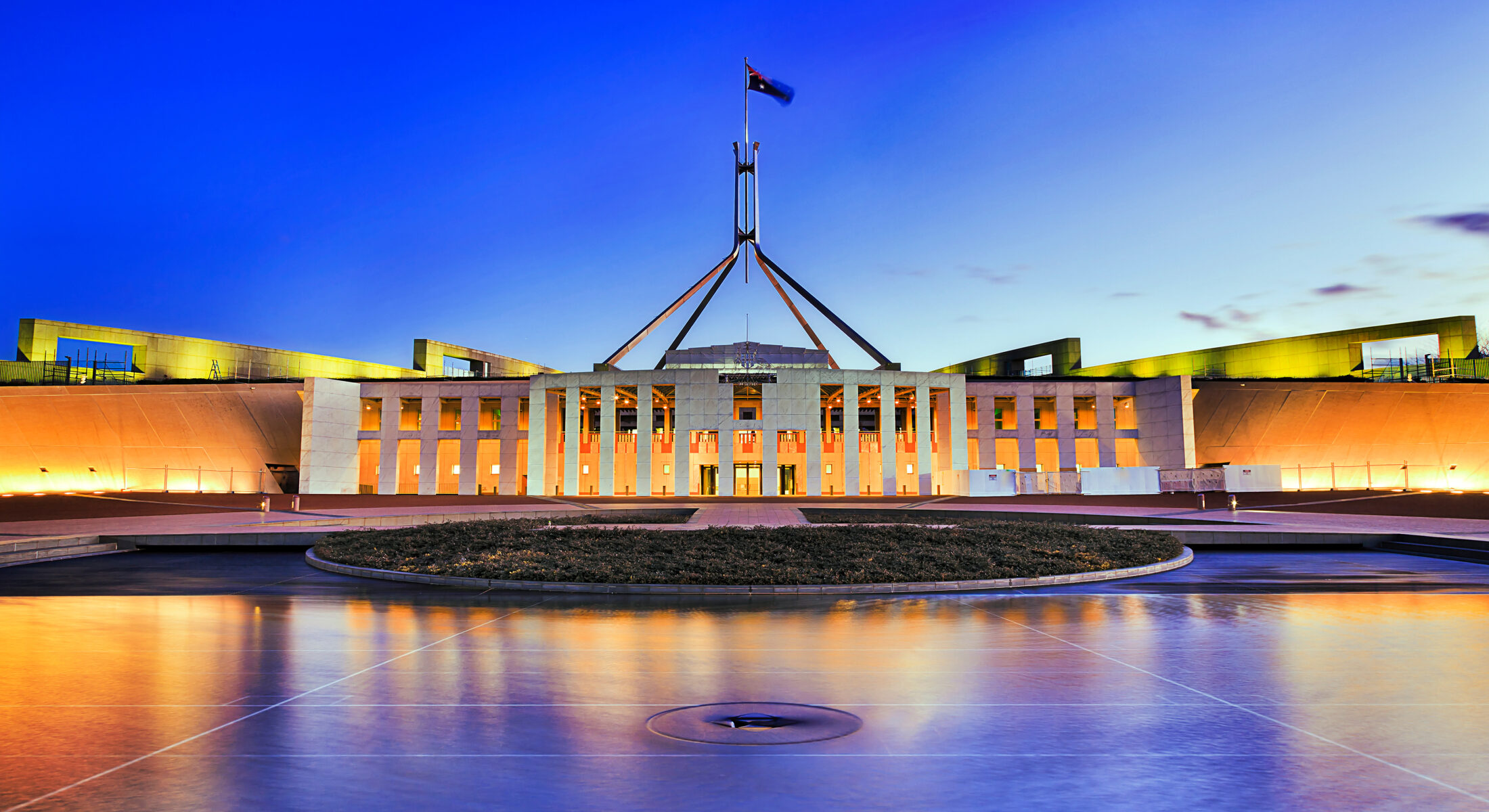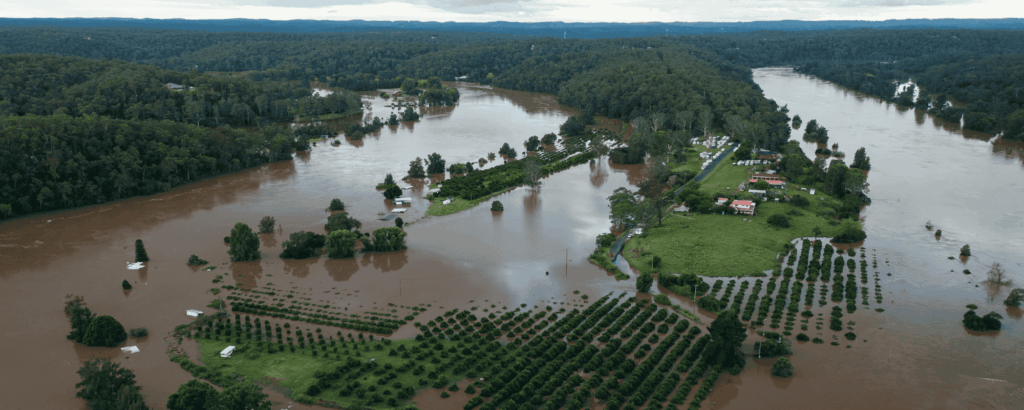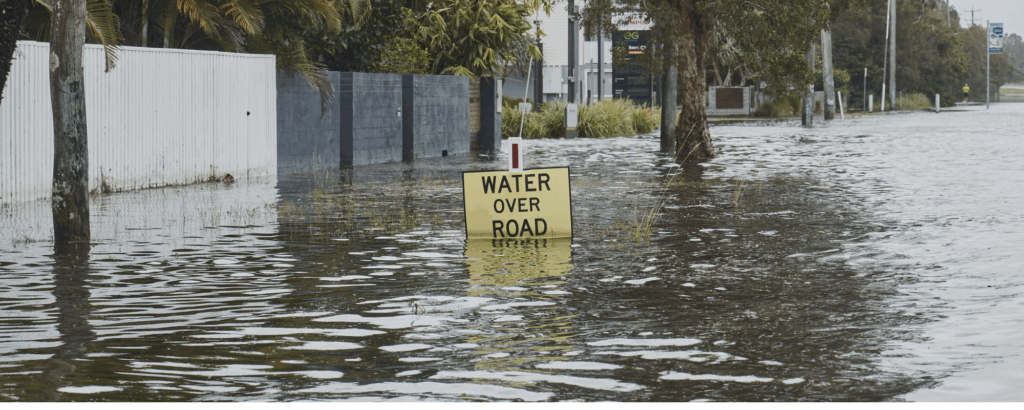The Liberals and the Nationals have both declared they will abandon Australia’s foundational climate change target – net zero climate pollution by 2050.
This Briefing investigates the consequences for Australia and the world were Australia to take this course of action.
Key findings:
- Abandoning net zero and Australia’s other climate targets could increase Australia’s climate pollution by 6.3 billion tonnes more over the next 25 years compared to current targets. That’s equivalent to the annual climate pollution of 3.2 billion Australian cars.
- Abandoning net zero is aligned with global temperature rise well above 3°C. Australia would face a future of relentless disasters and economic upheaval:
– 4 times the number of severe and extreme heatwave days
– 1.5 million Australians exposed to coastal flooding by 2050, and 3 million people by 2090.
– Double the number of extreme fire days
– Vast regions becoming uninsurable - Reneging on our climate commitments would damage Australia’s global standing and strain ties with Pacific nations that expect us to do more – not less – on climate change.
- Abandoning net zero would be an enormous risk to realising the broad benefits of the global clean energy transition, deterring investment in renewables and green exports.
What is net zero?
Net zero is a goal to cut climate pollution.
Climate pollution has now formed a massive blanket of heat-trapping gases around the world, raising global average temperature. The extra heat and energy is driving more extreme weather and other serious consequences for humanity. Climate pollution is primarily the burning of coal, oil and gas, fossil fuels. The only solution is to stop the problem at the source by driving down pollution from coal, oil and gas and moving rapidly to other energy sources.
While ideally climate pollution should be reduced to zero to prevent ongoing harm to the global climate, instead global governments, scientists, business and environmental organisations have widely adopted a goal of reducing pollution to “net zero” by 2050. Net zero is considered more realistic as it anticipates that while we can entirely cut most of our climate pollution, in some sectors (e.g. aviation) it’s not possible to do today. Net zero is about balance. Ensuring that the amount we are polluting is balanced by the amount we are taking out (e.g. by planting trees).
Net zero in the Paris Agreement
The 2015 Paris Agreement – adopted by 195 countries in 2015 including Australia – set a central goal
of “holding the increase in the global average temperature to well below 2°C above pre-industrial
levels” and pursuing efforts “to limit the temperature increase to 1.5°C above pre-industrial levels.” It
also added a complementary goal on net zero:
“To undertake rapid [emissions] reductions … so as to achieve a balance between anthropogenic emissions by sources and removal by sinks of greenhouse gases in the second half of this century.”
In other words, net zero means reaching a state in which climate pollution going into the atmosphere is balanced by removal out of the atmosphere. It’s like a bath tub (which represents the atmosphere) being filled up (primarily climate pollution from burning coal, oil and gas). The tap has been on high since the industrial revolution, causing the tub to fill rapidly. Reducing climate pollution from fossil fuels turns down the tap. But it’s unlikely that we can turn the tap off completely or stop all climate pollution in the time required. For the small amount of climate pollution remaining, we will need to deploy carbon removal approaches that remove climate pollution from the air to counterbalance any emissions still entering the atmosphere. The most common form of removal is planting trees which absorb carbon as they grow. This is net zero.
Slashing climate pollution to net zero as soon as possible is the only solution to the climate crisis. Moving too slowly, or abandoning this goal altogether, has deadly consequences.
Global and national commitment to net zero
As of June 2024, 107 countries, responsible for approximately 82 percent of global climate pollution, had adopted net-zero pledges. More than 9,000 companies, 1,000 cities, 1,000 educational institutions and 600 financial institutions have joined the Race to Zero, pledging to take rigorous, immediate
action to halve global emissions by 2030.
Australia has set a legislated target to reduce our greenhouse gas emissions to net zero by 2050 and every state and territory in Australia has a target of net zero emissions by 2050 or sooner. Net zero was backed by former Liberal-National Coalition Governments led by Malcolm Turnbull (by supporting the Paris Agreement in 2015) and Scott Morrison (by adopting net zero by 2050 as policy in 2021). Business and industry have consistently adopted net zero, for instance Business Council of Australia, the Minerals Council, the National Farmers Federation.
Climate disasters are already impacting Australians
Climate pollution from the burning coal, oil and gas is supercharging our climate system. Australia is already experiencing more intense heatwaves on land and sea, rising seas and storm surges, more dangerous bushfire conditions, and more powerful storms and intense flooding. Climate pollution is deeply affecting our regions, our communities, our economy and industries like farming and tourism.
In 2025, Australian communities have already experienced back-to-back flooding in New
South Wales and Queensland, unprecedented marine heatwaves devastating reefs in Western Australia and Queensland, and deepening drought in southern Australia affecting vast areas of farming land. Disasters cost the economy $2.2 billion in just the first half of 2025. These climate consequences are the result of past policy failures to curb climate pollution. Climate pollution is endangering our homes and risking the biggest asset of many Australians.
Flood risk has cost Australians $42.2 billion in property values, with one in six Australian homes at risk of flooding. Insurance costs have risen significantly for Australians as extreme weather risk has increased, with over 650,000 homes now either unavailable or unaffordable.
Abandoning net zero means catastrophic climate impacts
Scientific analysis, commissioned by the Climate Council, demonstrates that abandoning our net zero target would align with global temperature rise well above 3°C. A 3°C world would be catastrophic for Australians and industries like tourism and agriculture. There is simply no other solution to the climate crisis than slashing global climate pollution to net zero as quickly as possible.
Accelerating Australia’s climate pollution will increase climate risks and undermine global action
Abandoning net zero would see Australia’s climate pollution soar by more than 6.3 billion tonnes over the next 25 years, and see higher climate pollution continue beyond 2050. This is equivalent to the annual climate pollution of 3.2 billion Australian cars.
Australia, as a stable middle power and the 15 largest polluter in the world, has an important role to play in both tackling our own climate pollution and participating in the global effort. If Australia wer to abandon net zero, 180 other countries that pollute less could ask why they should act without Australia. Global action is only strong when countries cooperate and do their part. It would be a damaging set back for Australia to renege on its commitment to tackle climate change. In particular, it would be vastly damaging for Australia’s Pacific relationships, a vital region for our security, where nations expect Australia to do more, not less.
Costs of net zero are vastly exaggerated, whereas the benefits of action are often diminished
Many arguments about the cost of cutting climate pollution disingenuously ignore the fact that costs will be incurred no matter what our policy is. For example, the Net Zero Australia study found that 96% of the costs across our energy system – from generation to cars, appliances, and industry – will be incurred with or without a net zero policy.
With or without a climate pollution target, Australia will still need to produce energy, buy new cars and trucks to move people and freight, and invest in machinery and equipment for businesses. The question is not whether Australia invests at all – it is whether it should seek to invest in lower climate pollution options.
In many cases, the cleanest option is also the cheapest. For example, renewable power backed by storage and firming is the cheapest way to replace Australia’s ageing coal-fired power stations – 90% of which is expected to close in the next 10 years. In other cases, the incremental cost is modest, and outweighed by economic and environmental benefits.
Net Zero Australia found that reaching net zero would cost only 4% more over 25 years than abandoning Australia’s climate targets, an average of $12 billion per year. In contrast, setting up Australia’s LNG industry required more than $33 billion per year, which is 2.5 times more than the incremental cost of reaching net zero.
This cost of action pales in comparison to the costs of inaction, including more frequent and severe disasters, a weaker economy and lives and livelihoods lost. In Australia, unchecked climate change could cost the economy $4.2 trillion over the 50 years to 2070, a 6% impact on GDP.










